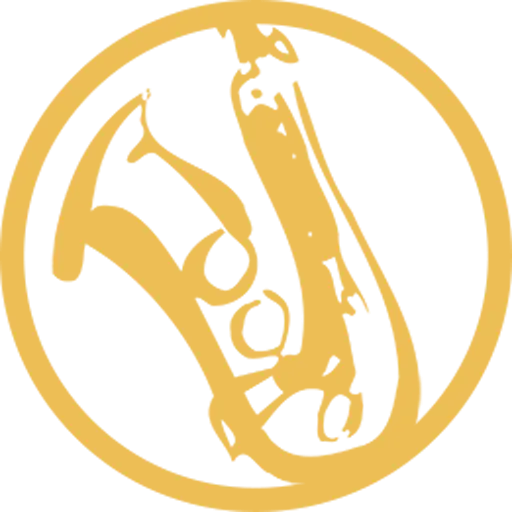Louisville, Kentucky, has worked diligently to keep pace with the world of entertainment in many different milieus, not the least of which is the musical form called “Jazz”. Louisville has a very rich jazz history.
Many jazz greats started their careers here and went on to world-wide fame. Louisville is proud to say that many of them have elected to make the Louisville area their home, not just because they like Louisville, but because they believe that this region affords them the opportunity to work with very talented up-and-coming young musicians. More than one of them has said that they returned because, compared to other areas of the country, Louisville has the most promising and talented jazz musicians to be found.
Perhaps part of the reason is that two major universities, UofL and Bellarmine offer excellent jazz programs. Of note is UofL’s School of Music, in which the Jamey Aebersold Jazz Studies Program turns out excellent musicians on a regular basis, as well as the Jeff Sherman Jazz Guitar program. Because the workshops sponsored by these schools are famous for quality education, they draw musicians from all over the world. Musicians know that these programs are the place to be to really learn their craft.
Yes, Louisville has more than entertainment in the form of thoroughbred horses to offer; it has quality jazz performance that stems from a rich musical history. On this page we will introduce you to that history in the hope that you will choose to come to Louisville to enjoy the excellent art of JAZZ.
The Good Old Days of Jazz
(An Interview with Gary Falk, By Carla Rueckert-McCarty – originally published in the Spring 2007 LJS Newsletter)
Gary Falk, well-rounded saxophone and flute player, owner/manager of Falk Audio and Louisville historian, met with me at Kaelin’s Restaurant to offer some insights on the history of the jazz scene in this area.
Gary reminisced about the old jazz venues in Louisville affectionately known as ‘the joints’. He talked about the Blue Moon at Hancock and Breckinridge Streets, famous for those late-night jam sessions. Over the years, Eddie Donaldson’s Shack at 118 W. Washington, the Topaz on Bardstown Road, the Diamond Horseshoe on 12th and Zane, Bucket and Lena’s at 13th and Magazine Street, Club Neon at 18th and Maple, Club Rialto on 18th Street ‘at the tracks’, Dave’s Palm Room at 13th and Magazine (across from Bucket and Lena’s) – which became Joe’s Palm Room when Joe Hammond bought it in 1967 and moved it to 18th and Jefferson Streets – and Mr. D’s at 34th and Grand were all popular places to go for jazz even though most were not billed as ‘jazz’ clubs. These establishments were, for the most part, corner bars that played the popular music of the day. It just so happened that the popular music of the day, especially in the black community, was jazz and blues. The incredible thing about the old clubs was that the music was not just a weekend event; it usually took place five or six nights a week.
The premier club that was billed as a place for jazz was the famed Top Hat at 13th and Walnut (now Muhammed Ali Blvd.) where Ella Fitzgerald, Cannonball Adderley (and brother Nat), Don Menza, Sarah Vaughn, Coleman Hawkins and other greats performed. It was famous for its beautiful glass-brick bar and décor.
An interesting spot that had many Hammond organ-based trios was Gene’s Bar on Third Street just a few blocks south of Broadway. The house of ill repute had lighting so dim that one could not even see the band. The band played on the first floor and attempted not to speculate about the traffic coming and going from the second floor. Gary felt it was possible that many of the old-timers around town might not want to admit playing there – but who could resist the music?
Ken Pyle originally owned the Storefront Congregation on Bardstown Road (near the Mid-City Mall) and, later, the Rudyard Kipling on Oak Street, where jazz groups have performed for many years.
In downtown Louisville, much jazz could be heard during the ’40s and ’50s. The Mint Julep, on 4th Street near Broadway, had jazz trios and quartets afternoons and evenings for many years. The Rooster Tail on Chestnut was home to many fine jazz groups as well, although they played principally for the ‘dancers’. The top floor of the Stouffer’s Hotel (today Holiday Inn) at Second and Broadway was a popular dining spot and had a continuous jazz venue.
Another place worth mentioning was not a night club at all, but an art center named Port of Call, which was on Zane Street near 6th. The Port of Call had regular jazz concerts featuring both local and out-of-town talent. A similar venue, Garden Court, was on Garvin Place, just around the corner.
In the mid to late 1960s, Eddie Donaldson’s Shack at 118 W. Washington Street (and later, 100 W. Washington) was legendary for the great musicians who played there – Pat Martino, Coleman Hawkins, Joe Henderson and Joe Pass, to mention a few. It was at this address in 1965 that the famous Trappist monk, Thomas Merton, along with Jamey Aebersold and Bobby Jones founded the Louisville Jazz Council, which was the precursor to the Louisville Jazz Society of today.
Our thanks to Gary Falk for the wealth of information, as well as Boogie Morton, who contributed additional material.
